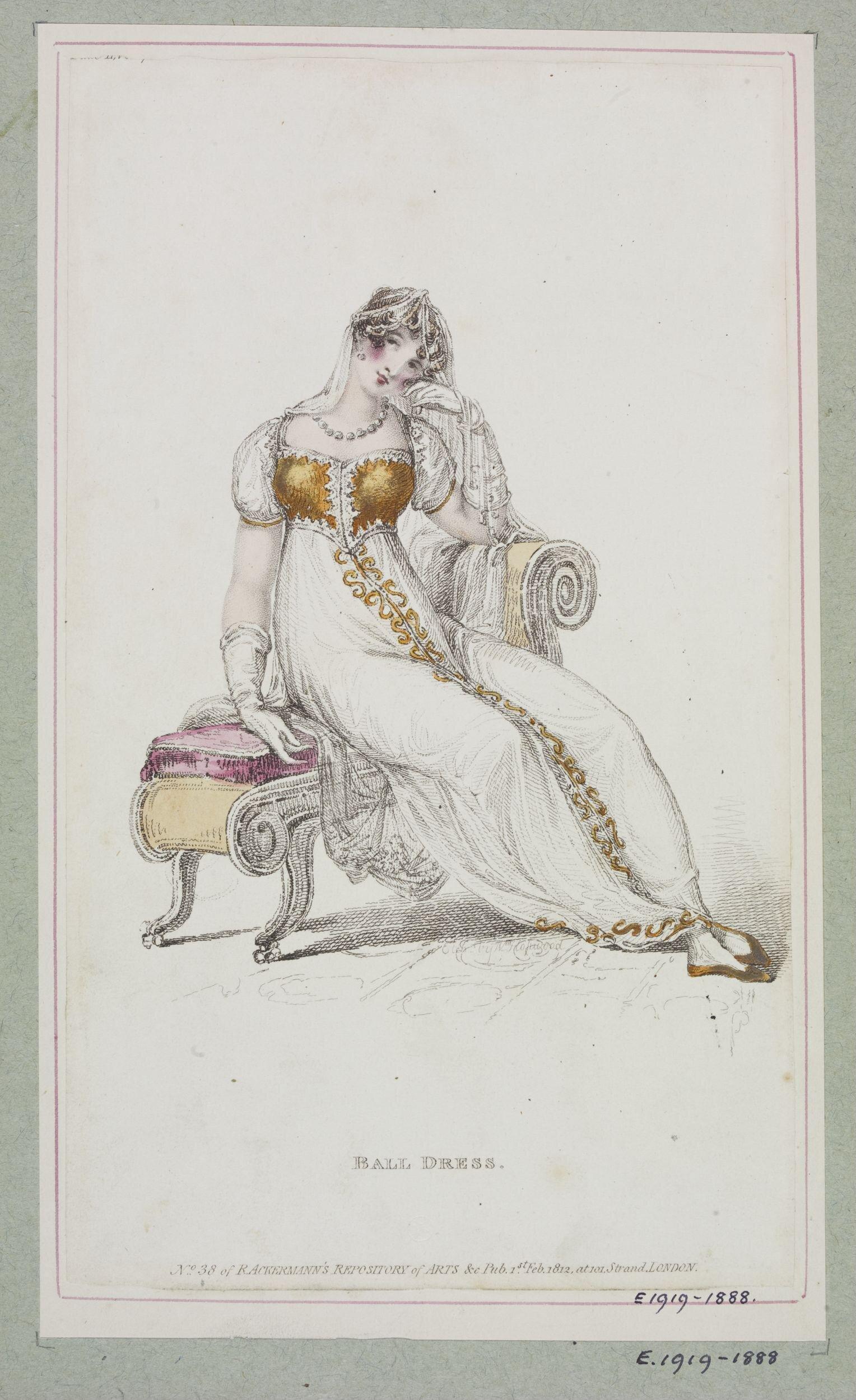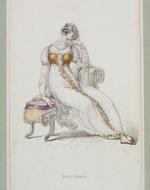Created by Abigail Smagala on Tue, 10/08/2024 - 21:31
Description:
Dress codes at public balls were outlined in the “Rules of Assembly” which would have been posted on the wall at the assembly rooms. These guidelines provided rules for the kind of behavior that was to be expected at gatherings. Most notably, the Rules of Assembly almost always included points about appropriate attire. Some of these points listed in Allison Thompson’s “The Rules of Assembly: Dancing at Bath and Other Spas in the Eighteenth Century” include the exclusion of boots and half boots and the requirement of a lady to wear court dress if she wished to dance minuets.
Women had a number of fashion options for various occasions: an evening dress for a more informal setting, full dress for a formal dinner or event, and ball dress for attending a ball or an assembly. Men’s attire was also dictated by a dress code, which Thomas Wilson outlines in his 1820 publication, “The Complete System of English Country Dancing,” by stating that “Gentlemen are not permitted to enter the Ball Room, in boots, spurs, gaiters, trowsers [sic] or with canes or sticks; nor are loose pantaloons considered proper for Full Dress Ball” (Wilson 261).
Women’s fashion changed throughout the Georgian and Regency Eras with different styles going in and out of popularity. Dresses were usually made of a light-colored material and often featured small patterns, stripes, and trim that was piped, braided, or made of ribbons. Despite the style for daywear being relatively simple, by 1815 ladies’ ball dresses were intricately decorated, especially at the hem, which often did not reach floor length so that the dancer’s feet could be viewed and so that she would not trip over a long skirt.
The attached image is a fashion plate made by William Hopwood in February of 1812. This plate shows a woman in a white and gold ball dress that was fashionable and appropriate for the time – a long white dress with sleeves and a delicate gold detail. Austen never directly describes the clothing of her characters in Pride and Prejudice, but it is likely that the Bennet girls would have worn dresses similar to the one pictured.
Works Cited
Constance, Heather. "Evening Dress, Ball Dress, and Court Dress in the Napoleonic Era." Regency Dances, www.regencydances.org/paper012.php. Accessed 8 Oct. 2024.
Hopwood, William. Ball Dress. 1812. Victoria and Albert Museum, collections.vam.ac.uk/item/O610897/ball-dress-fashion-plate-william-hopwood/. Accessed 8 Oct. 2024.
Rendell, Jane. "Almack's Assembly Rooms: A Site of Sexual Pleasure." Journal of Architectural Education (1984-), vol. 55, no. 3, 2002, pp. 136-49. JSTOR, www.jstor.org/stable/1425532. Accessed 7 Oct. 2024.
Scott, Lord. "An Introduction to Ladies' Fashions of the Regency Era." We Make History, wemakehistory.com/Fashion/Regency/RegencyLadies/RegencyLadies.htm. Accessed 8 Oct. 2024.
Thompson, Allison. "The Rules of the Assembly: Dancing at Bath and Other Spas in the Eighteenth Century." Persuasions On-Line, vol. 31, no. 1, winter 2010. Jane Austen Society of North America, jasna.org/persuasions/on-line/vol31no1/thompson.html. Accessed 7 Oct. 2024.
Wilson, Thomas. The Complete System of English Country Dancing, Containing All the Figures Ever Used in English Country Dancing, with a Variety of New Figures, and New Reels. London, 1815. Library of Congress, www.loc.gov/item/05029718/. Accessed 7 Oct. 2024.
Copyright:
Associated Place(s)
Part of Group:
Featured in Exhibit:
Artist:
- William Hopwood


